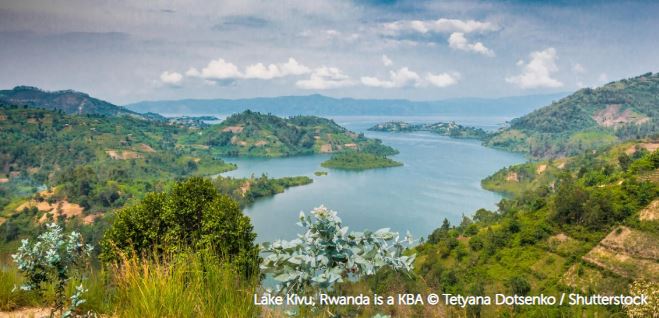
By Zoltan Waliczky. Read the article on BirdLife International.
The rock-solid criteria we use to identify Important Bird & Biodiversity Areas (IBAs) is now being used as the foundation for Key Biodiversity Areas (KBAs) – a new standard in site-based conservation which expands the concept beyond birds to all life on our planet.
Zones clés pour la biodiversité (or KBAs for short) are the new game in town. They represent the unified currency for site conservation, building on four decades of success of the IBA programme and similar concepts. KBAs go beyond birds: these are well-defined sites that are exceptionally important for maintaining the species and ecosystems that make up the rich tapestry of life on Earth.
Thirteen of the biggest global conservation organisations, among them BirdLife and the RSPB (BirdLife in the UK), have joined to form the KBA Partnership and put KBAs on the map. They will achieve this by targeting a wide range of stakeholders, including governments, international institutions and the private sector. Knowing where KBAs are and why they are important should help (among other things) drive the expansion of the global protected area network and plan future development and land uses that are compatible with their outstanding value for nature. It is equally important to work with local communities living in and around KBAs to make these sites the cornerstone of local sustainable, nature-friendly development.
Although more than 16,000 KBAs have already been identified, there is still a long way to go to catalogue KBAs for all the major animal and plant groups, and for all ecosystems. National coordination groups, whose work is to bring together experts to identify KBAs in a systematic, bottom-up way, have only been established in a minority of countries so far due to lack of capacity and resources. Collecting and analysing data on the distribution of different life forms is resource-intensive, and funding is difficult to secure for this sort of work despite the urgency of the biodiversity crisis. Civil society organizations are leading the way, establishing regional and global structures to help the process of documenting KBAs and making this information accessible to all.
There is a great opportunity lying in the power of the KBA Partnership and their hundreds of national partners. Working collaboratively to secure the future of the most important sites for nature means that resources can be allocated efficiently and synergies exploited. Advocating with a single voice against harmful developments and for more effective management and conservation of these sites can have greater impact on decision-makers at all levels. KBAs need to be the cornerstone for the post-2020 conservation agenda that will be adopted through the Convention on Biological Diversity next year. Whatever targets will be agreed for conserving nature and sustaining its services, KBAs must be embedded within them if we are not to risk losing thousands of species forever.
The BirdLife Partnership, through its 40-year history of documenting IBAs, has unique experience in mobilising data to identify sites using standardised criteria, managing this information and making it widely available on the BirdLife website. Now, we are building on these experiences to develop the World Database of KBAs on behalf of the entire KBA Partnership. This will support the bottom-up process of identifying KBAs and will make authoritative information on the most important sites for nature easily accessible. The KBA website is being revamped to showcase this information and to communicate the diverse range of activities of the KBA Partnership.
BirdLife has also led the way in establishing Local Conservation Groups at thousands of KBAs. These volunteer groups are involved in a wide range of activities including monitoring bird populations and threats, developing and implementing economic activities that are compatible with conservation including ecotourism and organic farming, organizing the sustainable use of ecological resources and carrying out habitat restoration. A major challenge is to find new and innovative ways to support the work of these groups and help connect them to enable the sharing of experiences and good practices. With the formation of the KBA Partnership, we can link them up with local organisations actively working on KBAs. This way, we can build support from KBAs at both local and global levels – the most sustainable model for guaranteeing their survival beyond the 21st century.